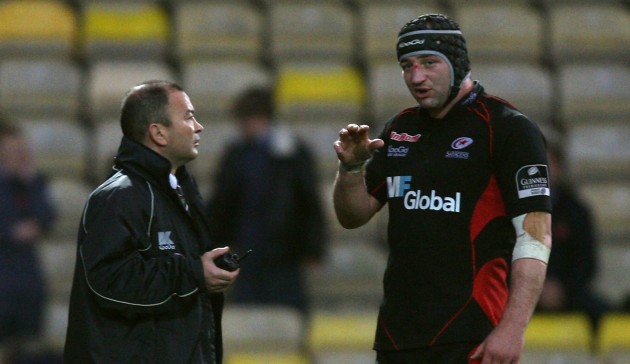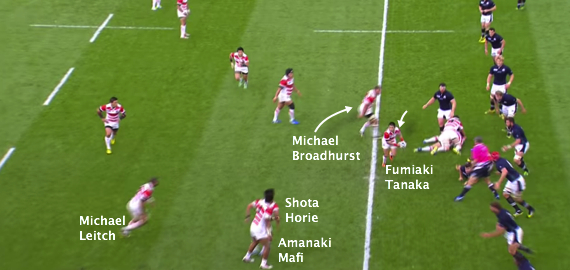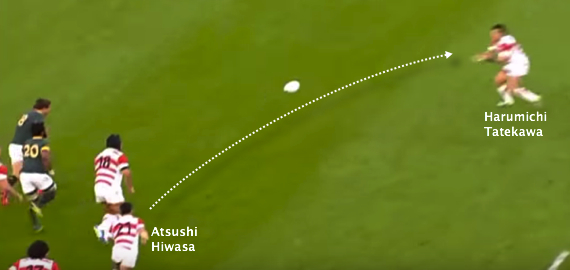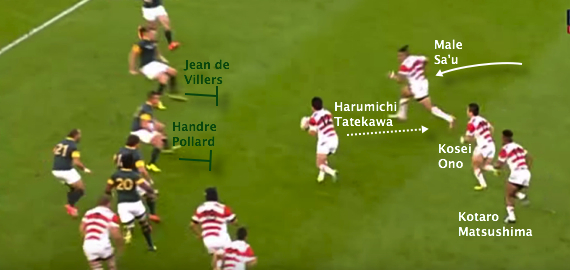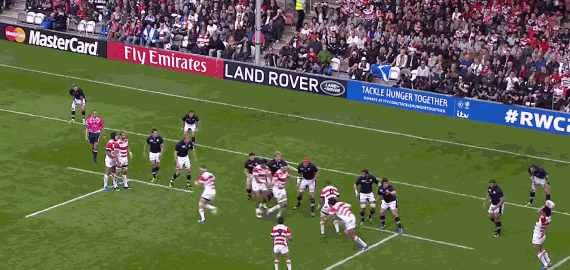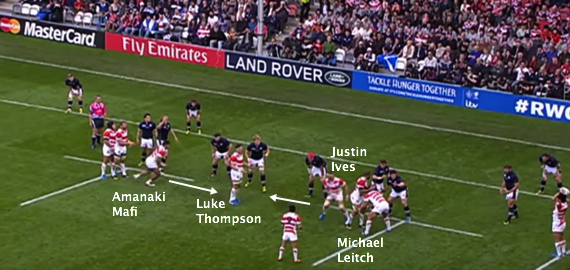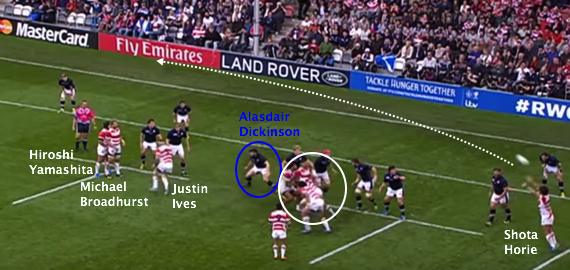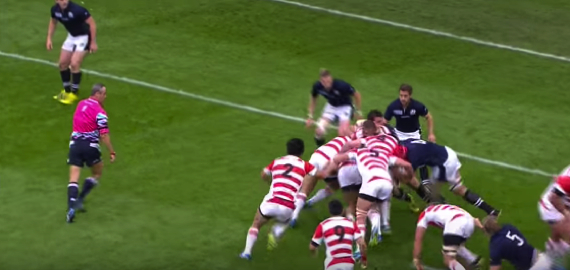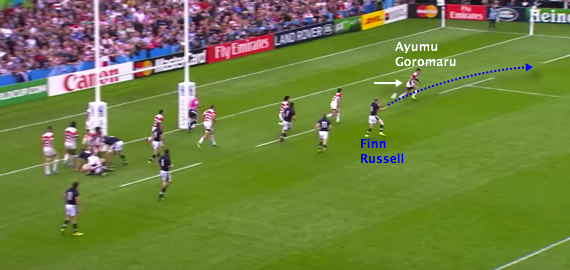After teaming up with both Saracens and Japan, Eddie Jones and Steve Borthwick will guide England into the Six Nations. Here are a few things to look out for.
“A coach is a servant to the players. We’ve got to ensure that we give the players everything they need to perform well.”
Last week, ahead of naming his first England squad on Wednesday, Eddie Jones outlined his philosophy in an interview for the RFU’s website.
His tone wasn’t quite tetchy, but there is no doubt that the straight-talking 55 year-old Australian will be doing things his own way.
Having dispensed with Stuart Lancaster’s lieutenants, Jones has entrusted scrum matters to highly-rated Ian Peel for the upcoming Six Nations. Paul Gustard will look after defence, bringing proactivity and intensity.
Steve Borthwick takes charge of general forward play, continuing a relationship with Jones that stretches back to 2008 when the pair met at Saracens. During the recent World Cup, these two masterminded Japan’s mightily popular campaign.
Wonderfully resourceful and diligently organised, the Brave Blossoms were far more effective than the sum of their parts. Of course, Jones and Borthwick tailored tactics to the personnel they had available. Even so, you can expect one or two traits to cross over as they take charge of the world’s largest player base.
Set-piece versatility
Former France international Marc dal Maso engineered huge improvements in Japan’s scrummaging, progress that were apparent at the World Cup.
On the other hand, England stalled. The hosts failed to force a steady stream of set-piece penalties and had no contingency. As a result, attacking impetus lapsed.
When faced with a more muscular pack, as they were during their opening game against South Africa, Japan simply escaped the scrum as quickly as possible. Take this example:
Bound between the left lock and openside flanker Michael Broadhurst, No 8 Hendrik Tui sets up what is known as ‘channel one ball’:
A clean, quick strike from hooker Shota Horie means Tui can collect from between his second rows and pass out rapidly:
Not only does this decrease the scope for South Africa to pressurise Japan’s scrum, it also establishes a platform for a fast-paced attack.
After centre Harumichi Tatekawa carries into midfield, the ball is recycled and Tui follows up to win some easy metres around the fringes before the Springboks can organise themselves:
Scrum-half and lynchpin Fumiaki Tanaka then bounces back to the right, where full-back Ayumu Goromaru can slice between Bismarck du Plessis and Lood de Jager, two tight-five forwards:
With the likes of Mko Vunipola in superb form, England’s scrum should be strong enough to threaten Six Nations rivals. However, if find themselves under the pump at the scrum or if they feel they can trouble an opponent on first phase via their backline, this is an extremely useful option.
Jones is taking it upon himself to oversee attack, which is where we turn next.
Phase-play creativity
Another area of weakness for England during the World Cup, and a facet that has let them down against premier nations for the past two seasons, was phase-play. Too often, an attack would fizzle out due to a dearth of ideas.
Japan trusted themselves with ball in hand, manipulating gaps and win collisions. In the early stages of their heavy defeat to Scotland, before fatigue set in, they looked dangerous.
Watch here as Bath-bound Amanaki Mafi bursts through:
This break comes on the third phase following a lineout and offers a great example of intelligent decision-making and energy.
The first thing to note is Broadhurst’s line, holding the Scotland defence on the left as Tanaka turns to the right to find Horie.
Horie, the kind of ball-playing forward that Jones is likely to favour in his new role, has Mafi to his right and Michael Leitch making up ground to his left:
After releasing the ball, Tanaka loops around the pod of three forwards, seemingly ready to take a return pass and link up with teammates further out wide.
Turning his back to the Scotland tacklers, Horie keeps up the pretence…
…but instead slips it to Leitch. An unsuspecting Grant Gilchrist is caught flat-footed…
…and while Ryan Wilson recovers to down Leitch, Mafi has charged on in support to receive a neat offload:
By unbalancing the defence, Japan ensure that their most dangerous carriers have the best chance of making ground. Imagine Billy Vunipola on the end of a similar pattern.
The Brave Blossoms also troubled opponents from first phase.
Strike moves
England did enjoy some success over the tournament with set moves, especially when larger runners such as Sam Burgess were deployed as decoys.
At 29-22 down with 12 minutes to go against South Africa, Japan executed this:
Primarily, the try underlines how well Borthwick had drilled the Japan lineout – something we will reinforce later.
Horie hits his jumper perfectly…
…allowing scrum-half Atsushi Hiwasa to fire out a pass to Tatekawa:
The next moments offer us an insight into how Jones might set up his midfield – with two distributors wearing 10 and 12 inside a more direct runner at 13.
Tatekawa takes the ball to the line and Male Sa’u cuts an acute angle, stunting the linespeed of the South Africa backline and cuasing indecsion. Tatekawa then hits fly-half Kosei Ono behind Sa’u…
…who drops off a short inside ball, putting blindside wing Kotaro Matsushima into the gap created Sa’u’s decoy line:
The reverse angle shows how the Springbok defence is carved open in the lead up to Goromaru’s finish:
From Jones’ chief area of expertise to Borthwick’s, and another source of a Japanese try at the World Cup.
Lineout maul precision
As a player, Borthwick was an unrivalled lineout technician and a stickler for detail. Those qualities underpinned Japan’s approach, as this score against Scotland demonstrates:
The movement prior to Horie’s throw is crucial. Japan set up with two lifting pods, one at the front and one at the tail. Justin Ives and Mafi then leave their jumpers, feigning to create a third lifting pod in the middle:
However, as Scotland concertina and prepare to launch David Denton to challenge Luke Thompson, Ives arcs around to the tail and intended target Broadhurst:
Scotland lifter Alasdair Dickinson finds himself in two minds, drawn towards the front (circled in white) but also wary of the tail:
Broadhurst takes unopposed and Leitch comes around from the front, apparently to latch on and set up a conventional maul:
Instead, he takes the ball, flanked by prop Keita Inagaki…
…and spins off to the left, backing into the Scottish fringe defence to provide the starting point for an entirely separate maul that probes a different angle.
Mafi now controls the ball…
…and Japan form a tight wedge that proves unstoppable:
Again, a reverse viewpoint depicts how this quick, coordinated move wreaks havoc:
Japan were no less impressive without possession.
Turnovers and tackling
As the man credited with discovering Wallaby great George Smith, Jones values nous at the ruck area and will almost certainly select a specialist groundhog such as Matt Kvesic at openside flanker with Chris Robshaw on the blindside.
But he will look to improve breakdown prowess across the board. This textbook pilfer, derailing a Springbok attack, comes from centre Sa’u:
Though Japan are in their own 22, they try to capitalise on the turnover by putting width on the ball immediately – once more trusting their handling and ball retention:
During the Six Nations, adverse weather conditions may mean a hack downfield is a better option in a similar situation, but the ambition says a lot for how Jones will encourage England to express themselves.
As mentioned above, Gustard will ensure systematic tenacity on defence. But Jones will not be too far behind in demanding wholehearted commitment.
During his infamous rant in the wake of a heavy loss to the touring French Barbarians in 2012, Jones growled: “If we want to win, we’ve got to be able to physically smash people”.
In that respect, Goromaru’s try-saver on Tommy Seymour was another sign of development:
Without a cut-out pass from Finn Russell, this is a certain try. Even so, Goromaru’s sheer determination is remarkable. He covers 20 metres before hurling his body at the Glasgow Warriors wing:
In the aforementioned RFU interview, Jones declared that becoming “the world’s most dominant team” would be England’s eventual goal but that victory over Scotland on February 6 was all that was concerning him currently.
He also explained that anyone not selected in his squad, to be announced on Wednesday, will have been omitted because they have not done enough. In two days then, we find out who Jones rates. From there, he and Borthwick go to work.
Thanks to World Rugby for the match footage.





